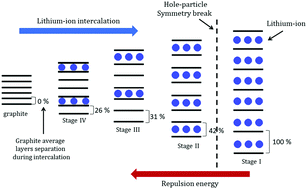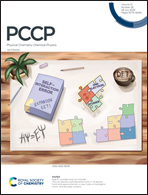Fractional and integer stages of lithium ion–graphite systems: the role of electrostatic and elastic contributions†
Abstract
In the present work, we analyze the hot topic of integer and fractional stages of lithium-ion batteries by using Monte Carlo simulations. While fractional stages have been demonstrated through several experimental, simulation and theoretical measurements, in other experimental techniques, such as electrochemical ones, there is no evidence for them. In previous work, we have analyzed the thermodynamics and kinetics of lithium-ion intercalation using a potential based on empirical parameterization, where multiple stages (integer and fractional) were found and analyzed. The present simulations suggest that if we consider repulsive elastic interactions in addition to electrostatic ones, the Hamiltonian symmetry is broken and there is no evidence for fractional stages. The physical origin of these repulsive interactions is assigned to the increasing graphite layer separation during lithium-ion intercalation. In the light of these simulations, selected experimental data are revisited, validating the presented novel parameterization. The parametrization used here can be used for other kinds of intercalation compounds, such as those involving Na or K.



 Please wait while we load your content...
Please wait while we load your content...